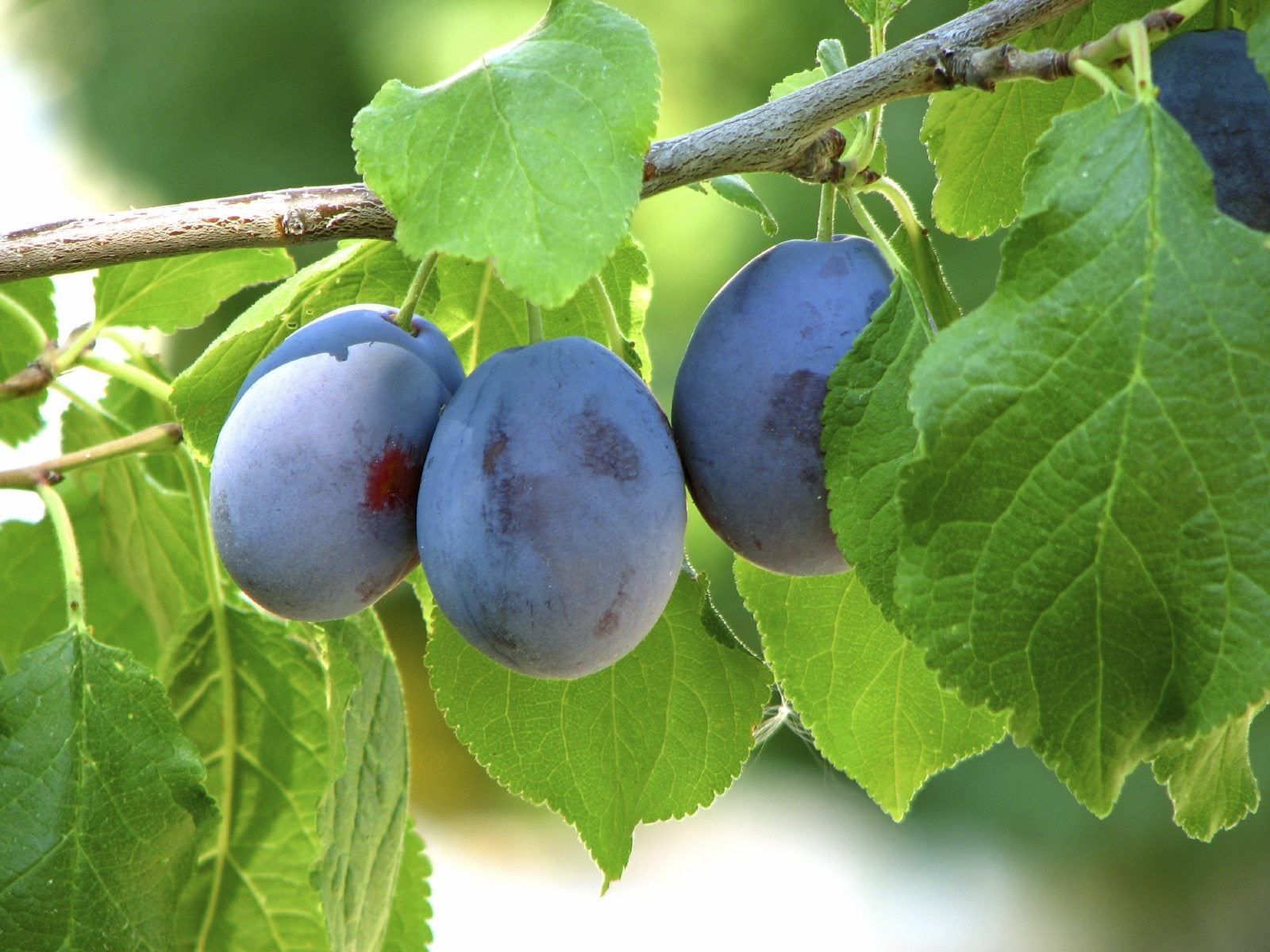Growing Damson Plum Trees: How To Care For Damson Plums


According to Damson plum tree information, fresh Damson plums (Prunus insititia) are bitter and unpleasant, so Damson plum trees aren’t recommended if you want to eat sweet, juicy fruit straight off the tree. However, when it comes to jams, jellies, and sauces, Damson plums are pure perfection.
Damson Plum Tree Information
What do Damson plums look like? The small clingstone prunes are dark purple black with firm green or golden yellow flesh. The trees display an attractive, rounded shape. The ovoid green leaves are finely toothed along the edges. Look for clusters of white blooms to appear in spring. Damson plum trees reach mature heights of about 20 feet (6 m.) with a similar spread, and dwarf trees are about half that size. Are Damson plums self-fertile? The answer is yes, Damson plums are self-fruitful, and a second tree isn’t required. However, a nearby pollinating partner may result in larger crops.
How to Grow Damson Plums
Growing Damson plum trees is suitable in USDA plant hardiness zones 5 through 7. If you’re thinking about growing Damson plum trees, you need a spot where the tree receives at least six to eight hours of full sunlight per day. Plum trees aren’t too choosy about soil, but the tree will perform best in deep, loamy, well-drained soil. A pH level slightly on either side of neutral is fine for this adaptable tree. Once established, Damson plum trees require little care. Water the tree deeply once every week during the first growing season. Thereafter, water deeply when the soil is dry, but never allow the ground to remain soggy or to become bone dry. An organic mulch, such as woodchips or straw, will conserve moisture and keep weeds in check. Water deeply in autumn to protect the roots during the winter. Feed the tree once a year, using 8 ounces (237 ml.) of fertilizer for each year of the tree’s age. Using a 10-10-10 fertilizer is generally recommended. Prune the tree as needed in early spring or midsummer but never in fall or winter. Damson plum trees generally don’t require thinning.
Gardening tips, videos, info and more delivered right to your inbox!
Sign up for the Gardening Know How newsletter today and receive a free copy of our e-book "How to Grow Delicious Tomatoes".

A Credentialed Garden Writer, Mary H. Dyer was with Gardening Know How in the very beginning, publishing articles as early as 2007.
-
 Looking For Plants To Give You The Soft And Fuzzies? Try These 5 Fuzzy Leaf Plant Options
Looking For Plants To Give You The Soft And Fuzzies? Try These 5 Fuzzy Leaf Plant OptionsLovers of texture, drama, silver foliage and tactile plants will adore these special sensory garden additions. These fuzzy leaf plant options will leave you all aglow
By Susan Albert
-
 Get Ready For A Summer Of Hummers! Grow These Full Sun Hummingbird Plants and Flowers
Get Ready For A Summer Of Hummers! Grow These Full Sun Hummingbird Plants and FlowersIf you’re lucky enough to enjoy a sunny backyard, make sure you are maxing out on your pollinator opportunities and grow these full sun hummingbird plants and flowers
By Tonya Barnett